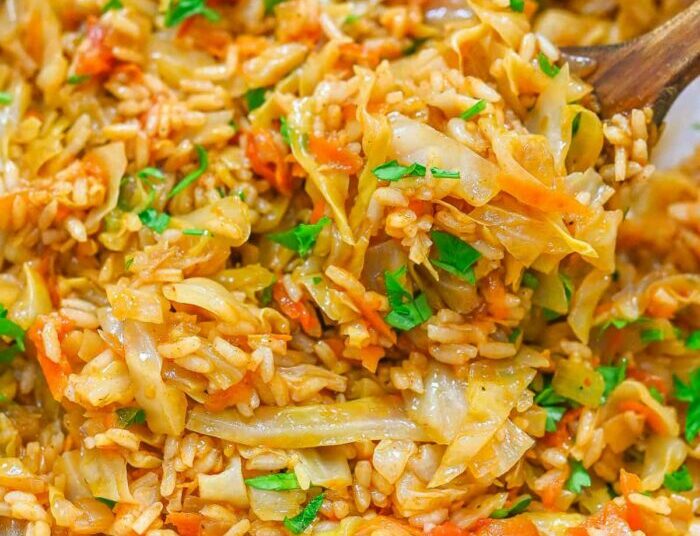Rice is a faithful companion on the Nigerian table. Whether it’s plain white rice on a busy weekday, smoky jollof rice lighting up a party, or creamy coconut rice warming a Sunday afternoon, rice is more than just a meal , it’s a source of comfort, community, and cherished memories. For many of us, each plate tells a story, connecting us to family traditions and familiar flavors we’ve grown to love.
But loving rice deeply also comes with questions about health. White rice, though satisfying, digests quickly and can raise blood sugar levels when eaten in large portions. Across Nigeria, rice is eaten daily by millions of families, and research shows that the way we cook and combine it matters for long-term wellness.
The thing is, we don’t have to give up rice. What we need is balance. Pairing rice with vegetables like cabbage helps us keep the comfort we love while adding nutrients our bodies need.
Rice:
Rice is rich in carbohydrates, the body’s main source of energy. But not all rice is created equal. White rice, which most of us eat, has a high glycemic index meaning it breaks down quickly into sugar. Brown rice and ofada rice contain more fiber and vitamins, helping with digestion and slower energy release.
Portion also plays a role. Nutritionists often recommend that rice be just one-quarter of the plate, leaving space for vegetables and proteins. By serving rice with cabbage sauce, you naturally reduce how much rice you eat while still feeling satisfied.
Cabbage
Cabbage may look simple, but it is loaded with goodness. A member of the cruciferous vegetable family, it provides vitamin C for immunity, vitamin K for healthy blood, and antioxidants that fight inflammation. Its high fiber content slows digestion, meaning it can help control blood sugar spikes after eating rice.
Cabbage is also budget-friendly and versatile. Whether stir-fried lightly, steamed, or cooked into sauce, it adapts beautifully to Nigerian cooking styles. Research even suggests regular intake of cruciferous vegetables may lower the risk of heart disease and certain cancers making cabbage more than just a side dish.
Bringing Balance To The Plate
Combining rice and cabbage is not just about taste It’s about health. Together, they create a meal that is filling yet light, flavorful yet nourishing. The sweetness of rice finds balance in the crunch and freshness of cabbage.
Here are simple tips to keep your rice meals healthier:
Steam or parboil rice lightly rather than frying it in oil.
Use spices and herbs like garlic, ginger, curry, or thyme to boost flavor without excess salt.
Load your sauce with vegetables—cabbage, carrots, green beans, or peppers.
Mind the oil—two tablespoons are enough to make a rich, colorful sauce.
These small shifts allow you to keep rice as part of your daily diet without it becoming a health burden.
Recipe ;Cabbage Sauce With Rice
Ingredients
2 cups rice (white, brown, or ofada)
½ medium head of cabbage, thinly sliced
2 medium tomatoes, chopped
1 red bell pepper (tatashe), chopped
2 scotch bonnet peppers (atarodo), minced (to taste)
1 medium onion, sliced
2 cloves garlic, crushed
1 teaspoon grated ginger
2 tablespoons groundnut or olive oil
1 seasoning cube (optional)
Salt to taste
Fresh parsley or scent leaf (for garnish)
Method
Rinse and cook the rice until tender. For extra nutrition, use brown or ofada rice.
Heat oil in a pan. Sauté onion, garlic, and ginger until fragrant.
Add tomatoes, bell pepper, and scotch bonnet. Cook down into a light sauce.
Stir in sliced cabbage, seasoning, and salt. Cook for 5–7 minutes, leaving the cabbage slightly crisp.
Serve sauce generously over rice. Garnish with fresh herbs.
Why it’s Healthy: Rice provides energy, while cabbage adds fiber, vitamins, and antioxidants. The sauce is light, colorful, and satisfying without excess oil. Together, they make a balanced, nourishing meal.





